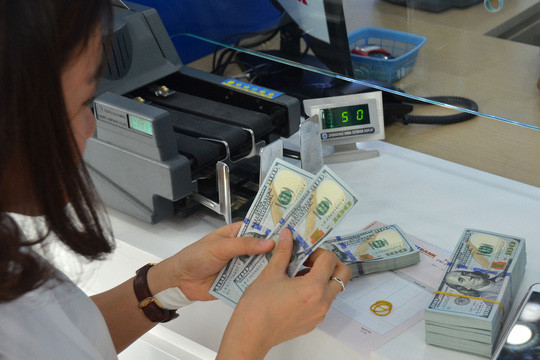Hanoi (VNA) – The Vietnamese monetary market will not suffer fromany significant impact from the US Federal Reserve (FED)’s fourth interest ratehike in 2018 as the move was already expected, experts have said.
On December 19, FED lifted the benchmark lending rate by 0.25 percentage pointto a rage of 2.25-2.5 percent per year.
Althoughglobal stocks have tumbled following FED’s move, the benchmark VN-Index on theHo Chi Minh Stock Exchange extended its growth at the beginning of the sessionon December 20. However, selling pressure of large-cap shares resulted in afall in their prices, making VN-Index dip in red margin. Also, the foreignplayers net bought 280 billion VND (12 million USD) on the bourse, helping theVN-Index experience only a slight decrease of 0.11 percent to 918.24 points.
In stark contrast, the HNX-Index on the northern bourse rose 0.35 percent toclose at 104.53 points on the day.
According to Ngo Dang Khoa, head of Global Markets at HSBC Bank Vietnam, asFED’s decision came at the expectation of the market, it does not have criticalinfluence on Vietnam’s fiscal and monetary market.
“In 2019, the US dollar is forecast to grow stronger than the Vietnamese dong,which means the pressure on the dollar-dong exchange rate will be mounting.With current flexible monetary policy, the State Bank of Vietnam (SBV) shouldput in places rational measures to harmonise economic growth and marco-economicstabilisation”, Khoa said.
Meanwhile, experts from the Bao Viet Securities (BVSC) said that the Vietnamesedong is among the currencies that have stiff resistance against FED’s lendingrate increases, and Vietnam is the only country in the Southeast Asia that hasnot taken its cue from the FED.
The SBV protects value of the Vietnamese dong by reducing liquidity of thebanking system, and the bank will maintain its strict liquidity management to counterFED’s lending rate gains in 2019.
However, an official of a commercial bank in Ho Chi Minh City said that FED’smove will have certain impacts on VND/USD exchange rate especially in thecontext of big fluctuations of Chinese yuan and that payments are reaching peakin the end of the year. Thus, enterprises need to carry out effectiveexchange rate risk preventive tools.-VNA




























